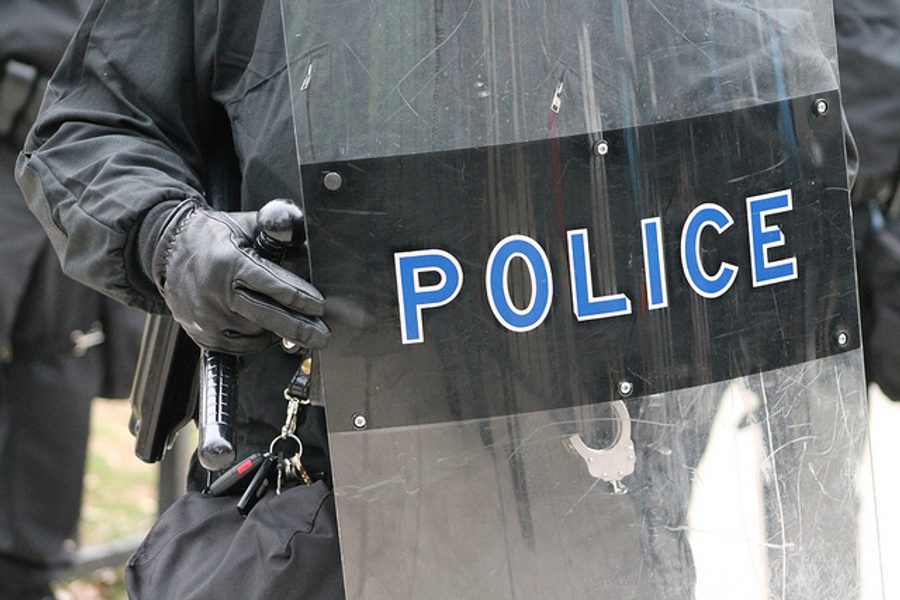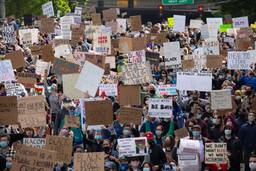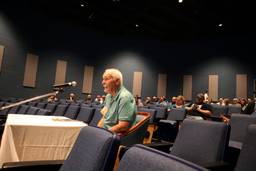How Progressives Can Counter ‘Tough-on Crime’ Messaging
Crime plays on primal emotions. We need deep engagement to transform people’s thinking.
Robert Kraig

After the cold-blooded police murder of George Floyd in 2020 sparked the largest outpouring of public protest in American history since the Civil Rights Movement, a brilliant set of Black organizers leveraged social media’s virality and corporate media’s thirst for sensational video to flip the traditional crime narrative. Police were recast as dangerous, and innocent Black people as victims of their racism. Shifts in resources from the carceral state to the most economically and racially marginalized communities, previously unthinkable, seemed possible.
What a difference two years makes. Massive propaganda — abetted by a still unexplained spike in homicide rates, and the media profits to be made in sensationalizing crime — gave the carceral state a golden opportunity to restore the previous order. Riding a wave of public fear, mayoral candidates in 2021 and 2022 won on platforms of more policing. The GOP continues to use crime as its leading racial dog whistle for the midterms.
The issue of crime draws on primal emotions. Once people feel personally unsafe, they can easily be induced to flee back to tough-on-crime narratives. In Wisconsin, a battleground state decisive in the national balance of power, every TV break brings an onslaught of racially coded, fear-mongering ads targeting progressive Senate candidate Mandela Barnes and the moderate incumbent Democratic governor, Tony Evers. The infamous Willy Horton ads look bland in comparison.
Seismic shifts inevitably prompt backlash, and social movements emboldened by success often overreach public consensus and provide openings for powerful defenders of the status quo. Witness the stubborn white resistance over the long attempt to implement Brown v. Board of Education, the Christian fundamentalist counteroffensive against the early gains of the gay rights movement, or the shocking failure of the Equal Rights Amendment. Movements in the social media age are even more vulnerable to this whiplash effect.
As Gal Beckerman observes in The Quiet Before, the social media complex, wired to promote engagement, is what made possible the breathtaking achievements of #BlackLivesMatter — without first building a shared analysis and worldview. But this underdevelopment is why such an immense mobilization could seem to melt away.
Progressive candidates and organizers who leave the social media bubble to knock doors are often shocked to learn the multiracial working class remains largely conventional in its views on criminal justice. Building a revised common sense about public safety requires not only canvassing but face-to-face community organizing. We must draw people into locally rooted social justice organizations with a deeper unity of purpose. Winning stepping-stone campaigns can then build a strong base of activists with a shared analysis, shift power away from police in defensible stages, and expand a durable public understanding to withstand the inevitable backlash.
Alternative responder programs have already reduced the volume of police responses to 911 calls by as much as 20% in Eugene, Ore., and reduced low-level crimes (like disorderly conduct) by one-third in Denver, Colo. The idea of sending mental health professionals to nonviolent situations, instead of police, is already popular — and leads into campaigns to fund mental health and substance abuse services, which would dramatically reduce dangerous interactions with armed officers.
Liberation movements must change the public conditions in which they operate, because they can never depend on elected officials to do the right thing. Just as George Wallace responded to Southern reactionaries by reinventing himself as an arch segregationist, some Democrats today are already capitulating to the backlash, airing ads featuring cops and promising to increase police funding.
Our great task, then, is building a sustainable public awakening on what actually makes us safe.

I hope you found this article important. Before you leave, I want to ask you to consider supporting our work with a donation. In These Times needs readers like you to help sustain our mission. We don’t depend on—or want—corporate advertising or deep-pocketed billionaires to fund our journalism. We’re supported by you, the reader, so we can focus on covering the issues that matter most to the progressive movement without fear or compromise.
Our work isn’t hidden behind a paywall because of people like you who support our journalism. We want to keep it that way. If you value the work we do and the movements we cover, please consider donating to In These Times.
Robert Kraig is executive director of the Milwaukee-based Citizen Action of Wisconsin, the treasurer of People’s Action Institute a nonprofit associated with People’s Action and a member of the board of directors of In These Times.






